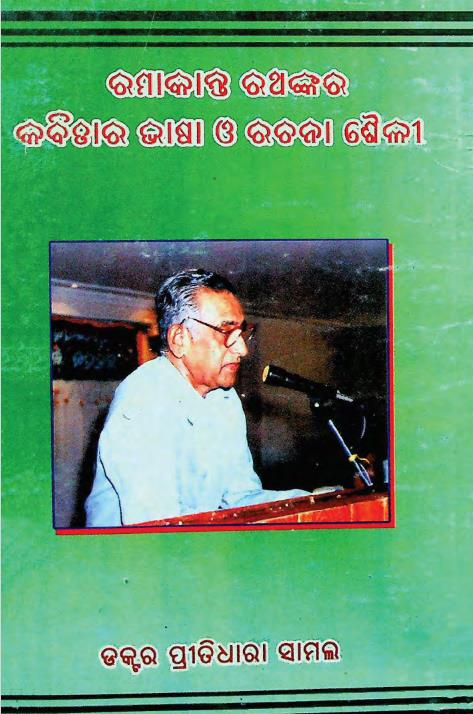In the realm of Odia literature, few poets have left an indelible mark as Ramakanta Rathankar. His unique approach to poetry not only resonates with the heart of Odia culture but also showcases a distinct linguistic style that pushes the boundaries of traditional forms. In her insightful 2006 study, Odia Ramakanta Rathankar Kabitara Bhasa o Rachana Saili, Pritidhara Samal delves deep into the intricacies of Rathankar’s language and compositional techniques, offering a scholarly perspective that enriches our understanding of his work.
From the outset, Samal emphasizes the profound connection between language and the poet’s lived experience. Rathankar’s use of the Odia language is marked by innovative expressions and a deep sensitivity to the cultural nuances of Odisha. Samal underscores that Rathankar’s choice of words often transcends the literal, weaving in layers of meaning that invite readers to explore the emotional landscapes they inhabit. This ability to evoke complex feelings through simple yet impactful language is a hallmark of Rathankar’s poetry, making it relatable and poignant.
One of the critical aspects of Rathankar’s style, as highlighted by Samal, is his adeptness at blending traditional and modern poetic forms. Rathankar respects the rich heritage of Odia poetry while simultaneously experimenting with structure and rhythm. This duality not only showcases his versatility but also his intent to forge a connection with contemporary readers. Samal’s analysis presents Rathankar as a bridge between the past and the present, capturing the essence of time-honored traditions while addressing modern themes and sensibilities.
Moreover, Samal’s examination of Rathankar’s thematic concerns reveals a poet deeply engaged with societal issues. Themes of love, loss, nature, and existential reflection permeate his work. Rathankar’s ability to articulate universal emotions through the lens of Odia culture makes his poetry accessible to a diverse audience. Samal points out that Rathankar often draws inspiration from the natural landscape of Odisha, using vivid imagery to enhance the thematic depth of his poetry. This imagery not only serves to beautify the text but also acts as a cultural signifier, grounding his work firmly in the Odia milieu.
In addition to language and themes, Samal discusses the rhythmic nuances present in Rathankar’s poetry, which she argues significantly contribute to its overall impact. The musicality of his verses reflects a keen understanding of how rhythm can enhance meaning. For Rathankar, poetry is not merely a written form of art but an auditory experience that engages the reader’s senses fully. This aspect of his work invites readers to not only read but also recite and listen, thereby creating a more immersive interaction with the text.
In conclusion, Pritidhara Samal’s Odia Ramakanta Rathankar Kabitara Bhasa o Rachana Saili is a significant contribution to the study of Odia literature. By meticulously dissecting Rathankar’s language, style, and thematic concerns, Samal sheds light on the enduring relevance of Rathankar’s poetry. Her scholarly analysis not only celebrates Rathankar’s literary prowess but also serves as an invitation to readers and critics alike to engage more deeply with the rich tapestry of Odia literary heritage. As we navigate through the complexities of contemporary poetry, Rathankar’s work stands as a testament to the power of language and art in fostering cultural identity and dialogue.
Books Info
| Books name | Ramakanta Rathankar Kabitara Bhasa o Rachana Saili/ରମାକାନ୍ତ ରଥଙ୍କର କବିତାର ଭାଷା ଓ ରଚନା ଶୈଳୀ |
| Author | Pritidhara Samal |
| No Of pages | 264 |
| Publisher | Saraswata Saranira Saswata Sanketa |
| Publication | 2013 |
| Printed At | Santosh Graphics |
| Distributor | NA |
Ramakanta Rathankar Kabitara Bhasa o Rachana Saili Sample
Ramakanta Rathankar Kabitara Bhasa o Rachana Saili Full Phd Download

